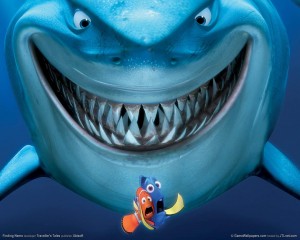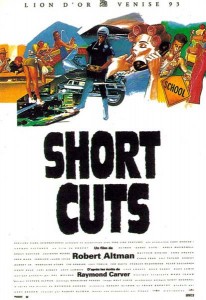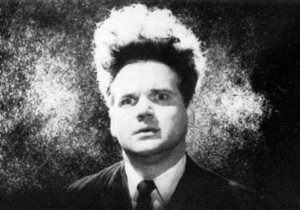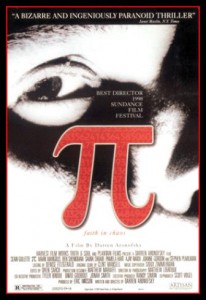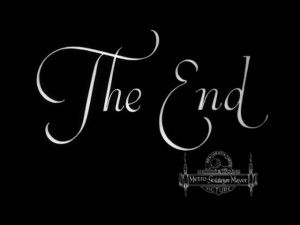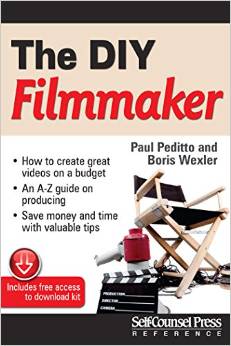INT. AUDITORIUM – MORNING
Kaufman, bleary-eyed, sits in the back. McKee paces.
MCKEE
Anyone else?
Kaufman timidly raises his hand.
MCKEE
Yes?
KAUFMAN
You talked about Crisis as the ultimate decision a character makes, but what if a writer is attempting to create a story where nothing much happens, where people don’t change, they don’t have any epiphanies. They struggle and are frustrated and nothing is resolved. More a reflection of the real world--
MCKEE
The real world? The real fucking world? First of all, if you write a screenplay without conflict or crisis, you’ll bore your audience to tears. Secondly: Nothing happens in the real world? Are you out of your fucking mind? People are murdered every day! There’s genocide and war and corruption! Every fucking day somewhere in the world somebody sacrifices his life to save someone else! Every fucking day someone somewhere makes a conscious decision to destroy someone else! People find love! People lose it, for Christ’s sake! A child watches her mother beaten to death on the steps of a church! Someone goes hungry! Somebody else betrays his best friend for a woman! If you can’t find that stuff in life, then you, my friend, don’t know much about life! And why the fuck are you taking up my precious two hours with your movie? I don’t have any use for it! I don’t have any bloody use for it!
KAUFMAN
Okay, thanks.
 The scene from Adaptation brings up an interesting question:
The scene from Adaptation brings up an interesting question:
Do you need resolution in your script?
I’m distrustful of absolutes in screenwriting, words like: Must. Always. Never.
The notion that you must have resolution is a fallacy. The real answer is a bit more complex… It depends on the movie.
CLOSEUP TERMINATOR, as the chain drive brings it into view. Half human flesh, half chrome steel. His red eye gazes right at us as he -- FIRES.
210A The T-1000 takes the round in the belly. The grenade EXPLODES inside its body. A huge hole is blown clean through it, and it is ripped open and peeled back, half inside-out. It topples into the molten steel and
-- 211 The T-1000’s head and upper body reappear above the molten steel. It is screaming. A terrifying, inhuman siren of a scream. It is changing, morphing, transforming into anything and everything it’s ever been so rapidly the eye can barely follow it -- We catch a glimpse of Janelle Voight checkered with the linoleum tile colors, Lewis the Guard with knives exploding from his face, other faces, switching at a stroboscopic rate now... a face every two frames until they merge into one face --
The T-1000 screams and slips beneath the surface of the molten steel. We see liquid silver running in dissipating whorls over the superheated surface... until it vanishes, swirling into nothing.
212 JOHN runs to Sarah. She stands staring into the pit. The empty shotgun slips from her fingers. Clatters to the floor. He sees that she’s okay and he runs to the fallen Terminator.
212A The crippled cyborg is trying to rise. Its servos whine and stutter. It pathetically lifts itself to a kneeling position, collapses... tries again. John lifts for all he’s worth. Sarah joins them, helping. The help the crippled machine get on its feet. It can barely stand.
TERMINATOR
I need a vacation.
They walk to the edge of the pit. Terminator looks down and sees that it is over.
JOHN
Is it dead?
TERMINATOR
Terminated.
Terminator 2 needs a resolution. The T-1000 must die. Sara Conner, John Conner must live. The audience, unconsciously, knows and expects this. The entertainment comes, and the magic of the filmmakers, in making us believe that John Conner could die.
Same with Neo in The Matrix. I don’t care how fast Agent Smith moves, how formidable an adversary he is–Neo can’t die! Not if there’s going to be Parts 2 and 3.
When was the last time James Bond died in a 007 movie?
Did you really think Nemo was going to get eaten by sharks? Or not be re-united by his ocean-fearing Dad? These endings have to happen. It’s a credit to the writers and filmmakers that they make an audience believe it could end badly.
What would happen if Nemo actually did get eaten?
Think of the wailing six year-olds, the livid parents never, ever paying for a Pixar movie again!
Resolution is essential for tentpole movies with mass audiences: Shrek, Pirates Of The Caribbean, Harry Potter, Iron Man, X-Men, Spiderman, Toy Story…
Failure to provide resolution would be box office suicide. Such a movie would never get made. Got to have closure for John Travolta and Nick Cage in Face Off…
But…
How about Faces?
What do you think John Cassavetes would have said if you told him Faces needed a firmer resolution? As necessary as closure is for a movie like Terminator, it’s equally non-essential in a movie like Faces.
How about Altman? Take away the movies where he didn’t wrap things up in a neat, clean bow of resolution, how many Altman movies would be left?
Oddly, or maybe not so, the further away from Hollywood and the Studios, the less essential seems to be the need for resolution.
Foreign filmmakers feel no such story restraints. Fellini, for example.
Also free of the confines of Studio expectation are low-budget films. Raise your budget on Kickstarter, chances are you’re going to end your movie exactly as you like–resolution or no. This includes a 12 year-old making his first film with a Sony Handycam, and David Lynch, too…
Major directors aren’t bound by the need for resolution. That’s not essential to storytelling, nor why people go to the movies.
People go to movies to be moved. Emotion is the key. Your own personal vision and experience transmuted into a universal statement that resonates with an audience. Writing characters they can invest in, love or despise, the audience going along for the ride…to the end of the line.
This is the heart of storytelling.


